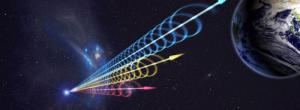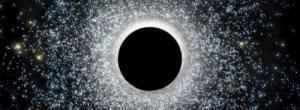Science
NASA Telescope Reveals Largest Batch of Earth-Size, Habitable-Zone Planets Around Single Star

- Read more
- 354 reads
NASA's Juno to Remain in Current Orbit at Jupiter

NASA's Juno spacecraft soared directly over Jupiter's south pole when JunoCam acquired this image on February 2, 2017 at 6:06 a.m. PT (9:06 a.m. ET), from an altitude of about 62,800 miles (101,000 kilometers) above the cloud tops.
- Read more
- 331 reads
Scientists determine precise 3-D location, identity of all 23,000 atoms in a nanoparticle: Berkeley Lab researchers help to map iron-platinum particle in unprecedented detail

The precise 3-D atomic composition of an iron-platinum nanoparticle is revealed in this reconstruction, with iron atoms in red and platinum atoms in blue. CREDIT Colin Ophus and Florian Niekiel, Berkeley Lab
- Read more
- 353 reads
Highly sensitive gas sensors for volatile organic compound detection

(Top) Schematic representation of the SnO2 nanorod sensor for volatile organic compound detection. (Bottom) Sensor response in relation to pore size for 100 ppm ethanol gas changes by 5 orders of magnitude at 250 degrees Celsius.CREDIT Professor Tetsuya Kida
- Read more
- 352 reads
Background suppression for super-resolution light microscopy: KIT-developed STEDD nanoscopy yields enhanced image quality for analyzing three-dimensional molecules and cell structures -- presentation in Nature Photonics

A cancer cell under the microscope: The STED image (left) has a background of low resolution. In the STEDD image (right), background suppression results in much better visible structures.
- Read more
- 378 reads
DNA 'barcoding' allows rapid testing of nanoparticles for therapeutic delivery

James Dahlman, an assistant professor in the Wallace H. Coulter Department of Biomedical Engineering at Georgia Tech and Emory University, holds a microfluidic chip used to fabricate nanoparticles that could be used to deliver therapeutic genes.
- Read more
- 370 reads
Human Rights
Fostering a More Humane World: The 28th Eurasian Economic Summi

Conscience, Hope, and Action: Keys to Global Peace and Sustainability

Ringing FOWPAL’s Peace Bell for the World:Nobel Peace Prize Laureates’ Visions and Actions

Protecting the World’s Cultural Diversity for a Sustainable Future

Puppet Show I International Friendship Day 2020





